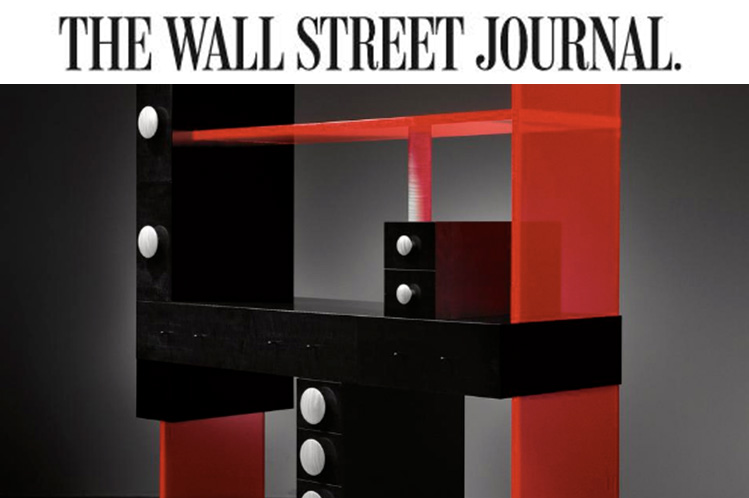By Julie V. Iovine
A household name in Europe, the Italian designer Ettore Sottsass—best known to Americans, if at all, for his fireplug-red Valentine Portable Typewriter (1968) for Olivetti and carnivalesque Memphis furnishings (1981-86)—was a Zelig with the universal dream complex of a Carl Jung.
Prodigiously creative as an industrial designer, ceramist, architect, magazine publisher, photographer, and designer of graphics, jewelry and interiors, Sottsass was a fixture on the European design scene from the postwar years in Italy through 2007, when he died at age 90. Along the way he sponged up cultural references both of the moment and from centuries past as he strove to invest his designs with the emotional impact and elemental clarity of a kiss.
“Ettore Sottsass: Design Radical,” at the Met Breuer, tries hard to put the designer in context with the ages. But in the process it does not allow his creative output to make its own case for enduring significance. Always colorful and confrontational, Sotsass’s designs range from the slightly inflated but still sleekly geometric to bulbous collages of form reminiscent of graphic comic strips, to accretions of elemental shapes approaching the archetypal.
The show includes some 85 objects and drawings by Sottsass alongside about the same number of works made by other artists and from other times—including Egyptian blue faience from 1400 B.C. and Buddhist shrine figures from the seventh century, classics of the Wiener Werkstätte in Austria circa 1900, and modern and contemporary paintings by Paul Klee, Wassily Kandinsky and Frank Stella. (Works by such talents of today as Studio Job and Oeuffice are intended to show how Sottsass continues to inspire, but many look more like products of a postmodernist revival.)
…










